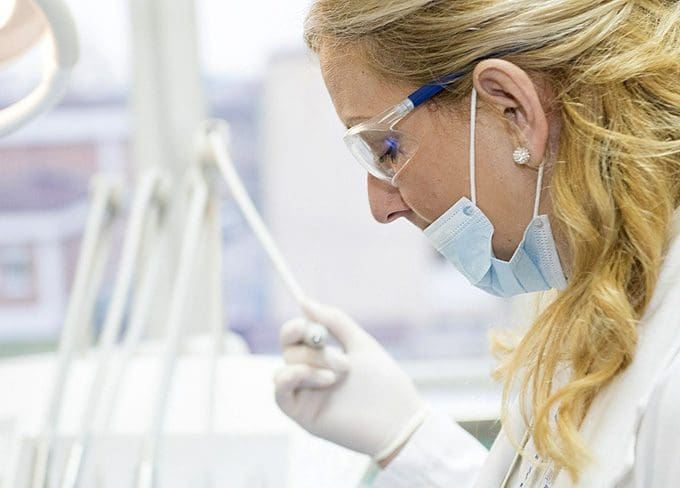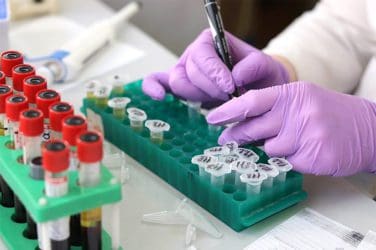words Al Woods

The pandemic has been a global challenge, as the virus reminded us how unprepared we are for unprecedented circumstances. Multiple sectors collapsed under the weight of the virus.
On one side, global economies were struggling to keep up, while on the other, the medical industry was exhausted. If we analyze the healthcare system alone, they were tested to the max. Practitioners had to use their skills and knowledge like never before. They had to look after patients and themselves in an indefinite manner. The healthcare sector couldn’t even rely on external factors such as outside resources to help. It was a challenge that tested the industry heavily. The medical administration never before was put on the spot quite like this. Here’s a more profound study of what the medical healthcare sector went through because of COVID:
Shortage In Hospital Rooms
Patients diagnosed with COVID were in desperate need of a hospital room, as they had the equipment and tools necessary to manage these patient cases. However, no one expected a piling number of points in a short time. As days passed on, numerous cases got admitted into the hospitals. There came a time when hospitals completely ran out of rooms, and they had to send patients home. The administration had trouble keeping up with all the cases coming to the hospitals, and even communal spaces were not enough.
Restructure The Healthcare System
The COVID made the administration make decisions that were the need of the hour. The best professionals able to structure the system were with skills and advanced degrees. However, practitioners keep themselves updated with training and online courses. Degrees such as executive masters in healthcare administration became a necessary step in helping reimagine the healthcare system. Hospitals could no longer work conventionally. They had to make swift decisions that could protect patients as well as workers. They also needed to get smart about utilizing and managing resources. The management and planning that runs a healthcare system require stamina and vigilance that require proper attention.
PPE Management
COVID is a contagious disease, and practitioners cannot treat patients without the proper equipment. The hospital is responsible for providing practitioners with the appropriate equipment such as protective gear. Most of the PPE used in US hospitals comes from abroad. Unfortunately, because of the virus, most airlines had to shut down. Hospital resources were depleted by the day, and there was no end in sight. The administration had to come with methods that could prevent further depletion of resources. They encouraged practitioners to come up with creative solutions to save guard resources. These include makeshift PPEs that can help practitioners look after patients.
Manage Practitioner Schedules
Unfortunately, the administration could not do much. Since hospitals were filled to the maximum with patients, practitioners had no chance to get a break. Nurses had to pull multiple shifts despite their fatigued state and quarantine at the hospital. Practitioners had to do the same. Hospitals got filled with practitioners who were tired and exhausted and on the verge of collapsing. The rising cases forced them and no end in sight to request practitioners to stay on board. Most practitioners started experiencing mental health issues such as depression and anxiety from their hectic schedules.
Get More Nurses
The administration also had to hire nurses who had long retired to come back to the sector. Inexperienced nurses also needed to join the workforce as soon as possible. The situation was complex, but they had to hire these professionals as quickly as possible. The hospital was facing a significant depletion in the nursing staff. Many staff members were falling sick and were unable to keep up with the demands of their work. They also needed more teams because the hospital got divided between checking routine checkup patients and those coming for COVID. Practitioners also get divided between checking patients and those who are coming for COVID. The workload was beyond saturated for either of the sectors to manage.
Biohazard Disposal
The wastes that hospitals produce need to go out a specific route. Biohazards cannot exit the hospital in a regular trash can. Unfortunately, the healthcare sector had to reuse much PPE despite contamination to keep up with the workload. The rest of the biohazard trash, including blood, body fluids, and even patient gowns, had to go. The bags in which these wastes left the hospital cannot get burned either. They were strong polythene bags that would release more fumes and microbes into the air endangering the population. However, these bags cannot be left to decompose naturally. The land sites were already filled, and there were no more spaces to get rid of these bags. So it became a challenge to get rid of the biohazard disposal once and for all.
Incorporate Telehealth
Telehealth became a need of time during the virus. It is a process through which patients contact the relevant practitioner over the internet. Telehealth makes it easier for patients to find help. It is a good and safe option for immunocompromised and even patients who need routine checkups. It also became a valuable tool for people living in rural sectors. These communities are so far away from hospitals and accessible health care systems that they cannot get help. A group of public health professionals can tap into these areas and use the internet to talk to professionals and get them help. Telehealth also helps hospitals invest in an app instead of a website alone to give the community more outlets that they can tap into help. The administration had to push forward with the telehealth system right away.
Ways To Get People Tested
The hospital administration had to figure out ways they could administer patients with tests. They couldn’t let patients come to the hospital as the environment was not safe. So it was essential to figure out ways that doctors and nurses could administer tests without endangering lives. The first step was setting up mobile testing centers. When those were successfully up and running, they started offering to check patients in their house. Now the healthcare system is at a point where they can test patients through mobile vans. These tests were necessary as they informed the healthcare sector what they’re dealing with. It also tells the healthcare sector how fast Corona was and what ethnicity it was impacting the most. It also provided an analysis of what age group and gender were the most vulnerable. The information helped hospitals divide their resources further to care for these communities and keep the population safe.
Wrap Up
The healthcare sector staggered under the weight of the virus. The pandemic has been a massive medical challenge since it threatened the lives of the population. There was an enormous shortage in hospital rooms and even staff to take care of patients. Supplies were also in massive need since the healthcare sector didn’t have enough to keep up with the rising cases. Hospitals had to invite nurses to come back to work to fulfill the empty spaces in the staff. The administration was also forced to push forward with policies that they would not usually entertain. As we are steadily pulling free from the effect of the virus, there are still miles to go before we are back in shape.









